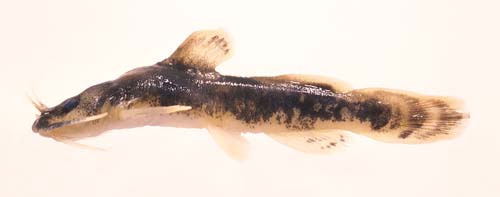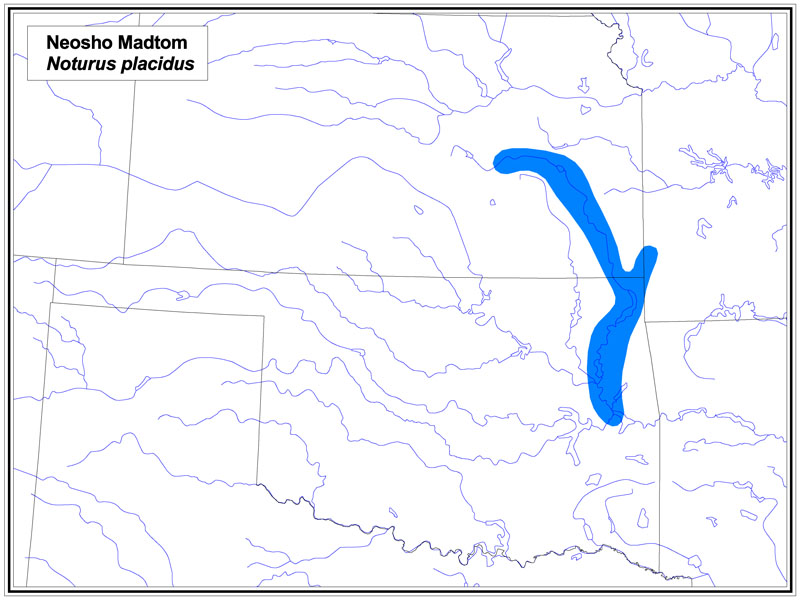
Adult male from Neosho R. at Emporia, KS
54.6 mm SL
NEOSHO MADTOM
Noturus placidus Taylor 1969
Identification: The Neosho Madtom has a stout body, deepest beneath the dorsal fin, and a relatively deep caudal peduncle. Rays along the lower part of the caudal fin are white. The body is light yellow-pink with brown mottling above and with faint to prominent blotches and saddles. A faint pair of light spots (sometimes absent) lie in front of the dorsal fin. The underside of the body is white to yellow. The pectoral spine is large with 6-10 large teeth on the rear edge and small teeth on the front edge. The adipose fin is joined to the caudal fin. The lower half of the adipose fin has a dusky band. The caudal fin is straight or slightly rounded. The caudal fin has one dark crescent-shaped band in the middle and another near the white edge. Other fins are blotched and edged in white. The anal fin has 13-16 rays. To 3 � in. (8.7 cm) total length.
Range: The Neosho Madtom is restricted to the Arkansas River drainage. Within the drainage, it is found in Spring River in southwestern Missouri and southeastern Kansas; on the Cottonwood and Neosho rivers in eastern Kansas and northeastern Oklahoma; and in the lower Illinois River in east-central Oklahoma. The species is uncommon and protected as a threatened species.
Habitat: The Neosho Madtom inhabits rocky riffles and runs of small to medium rivers.
Similar species: The Northern Madtom, Noturus stigmosus, has a dark band extending into the upper half of the adipose fin and no white along the lower rays of the caudal fin. The Frecklebelly Madtom, Noturus munitus, has the rear edge of the adipose fin nearly free from the caudal fin, large teeth on front of the pectoral spine, a dark band on the adipose fin extending to the edge of the fin, 4 prominent saddles on the back, and large dark specks on the belly. The Mountain Madtom, Noturus eleutherus, has a dark brown bar at the base of the caudal peduncle but no dark crescent-shaped band in the middle of the caudal fin, the adipose fin nearly free from the caudal fin, and large teeth on the front of the pectoral spine.
